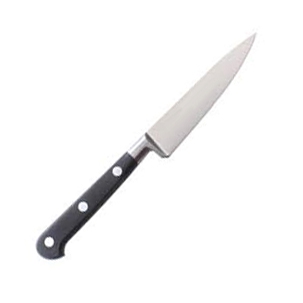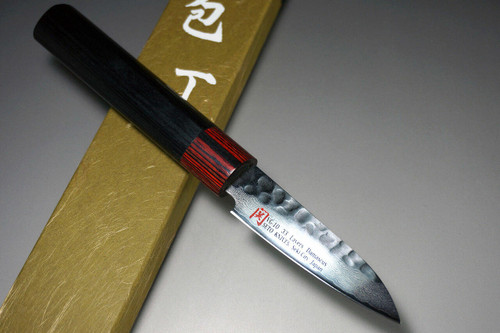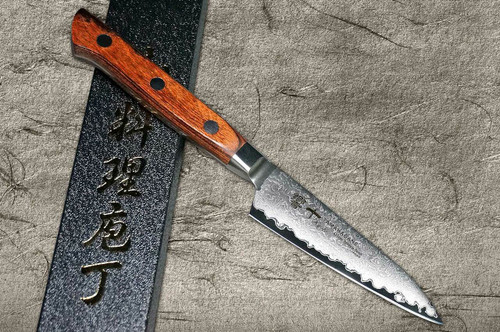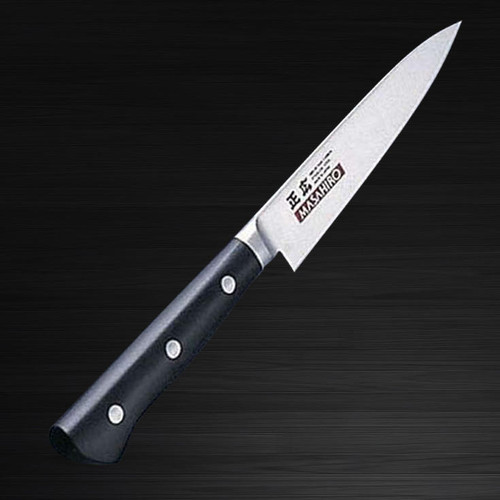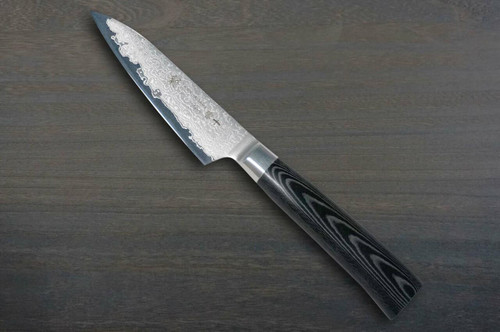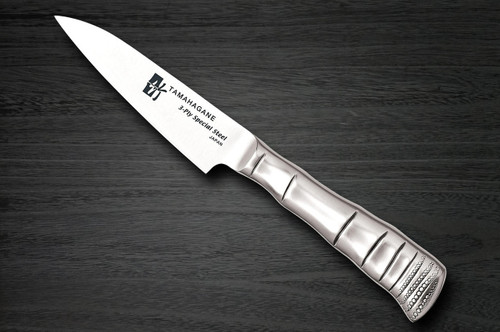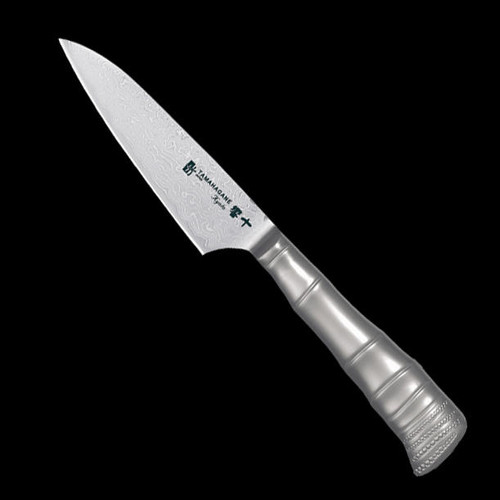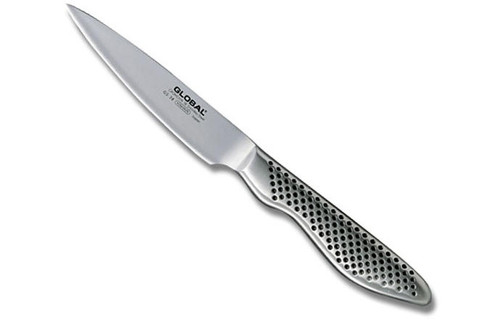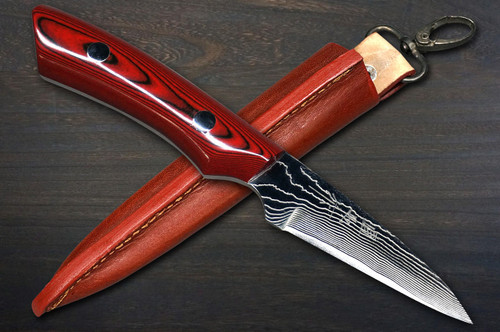Paring knife
A paring knife is a specialized small knife designed for detailed work and is an extremely useful kitchen tool for precise tasks.
.1 Uses of Paring Knife
- Peeling fruits and vegetables
- Making decorative cuts on small vegetables
- Removing seeds and cores
- Detailed work on small ingredients
- Creating garnishes for dishes
2. Knives Often Compared to Paring Knives
- Petty knife: Most commonly compared due to similar size and purpose
- Utility knife: Larger than a paring knife and more multi-purpose
- Fruit knife: A small knife specifically for fruits, usually with a serrated blade
- Knife peelers: Specialized peeling tools with small blades on the tip or side (Y-peelers or Swiss-type peelers)
3. Differences Between Paring Knives and Petty Knives
Though similar, they have several differences:
- Origin: Paring knives developed from Western cuisine, petty knives from Japanese cuisine
- Blade length: Paring knives typically 7-10cm (2.8-3.9 inches), petty knives slightly longer at 12-15cm (4.7-5.9 inches)
- Design: Paring knives often have pointed, curved tips, while petty knives are more straight
- Purpose: Paring knives specialize in peeling tasks, petty knives are more versatile small knives
4. Origins of Paring and Petty Knives
- Paring Knife Origins:
Developed in Europe around the 18th century for Western cuisine
Name derived from "paring" (the act of peeling)
Evolved as a specialized small knife in French and German culinary traditions
Designed for peeling fruits and vegetables, with various shapes developed over time
- Petty Knife Origins:
Relatively new knife developed in Japan after the Meiji era (1868-1912) under Western culinary influence
Name derived from French word "petit" (small)
Fusion of traditional Japanese knife-making techniques and Western designs
Unlike traditional Japanese knives (single-beveled), designed from the start with double bevels
In modern times, with globalization of culinary culture, the distinction has become less strict
5. How to Choose a Paring Knife
- Blade Shape:
Straight blade: Best for precise cutting and detailed work
Curved blade (bird beak): Ideal for peeling fruits and vegetables, follows curved surfaces easily
- Blade Length:
Standard paring knives are 7-10cm (2.8-3.9 inches), but choose based on your needs:
Shorter (6-8cm / 2.4-3.1 inches) for delicate decorative work
Medium (8-9cm / 3.1-3.5 inches) for general peeling
Longer (9-10cm / 3.5-3.9 inches) for more multipurpose use
- Tip Shape:
Pointed tip: Suitable for removing cores and precision work
Rounded tip: Safer and good for curved peeling
- Blade Thickness:
Thin blade: For delicate peeling and precise decorative cuts
Thicker blade: More durable and suitable for peeling harder vegetables
- Grip Design:
Non-slip grip specialized for peeling work
Designs with finger rests make it easier to apply force when peeling
These are the key points for choosing a paring knife. We recommend selecting based on your primary use (peeling, decoration, detailed cutting, etc.).
6. Popular Paring Knife Products
Please check the listed selections below.



